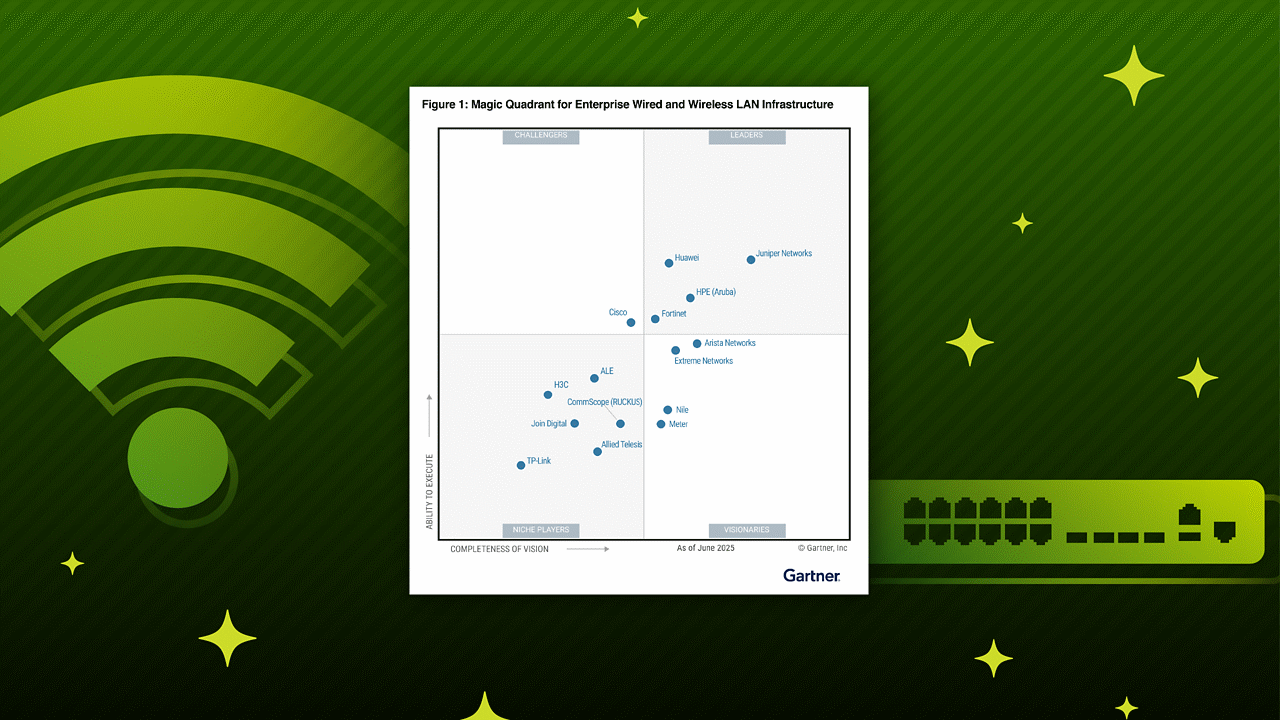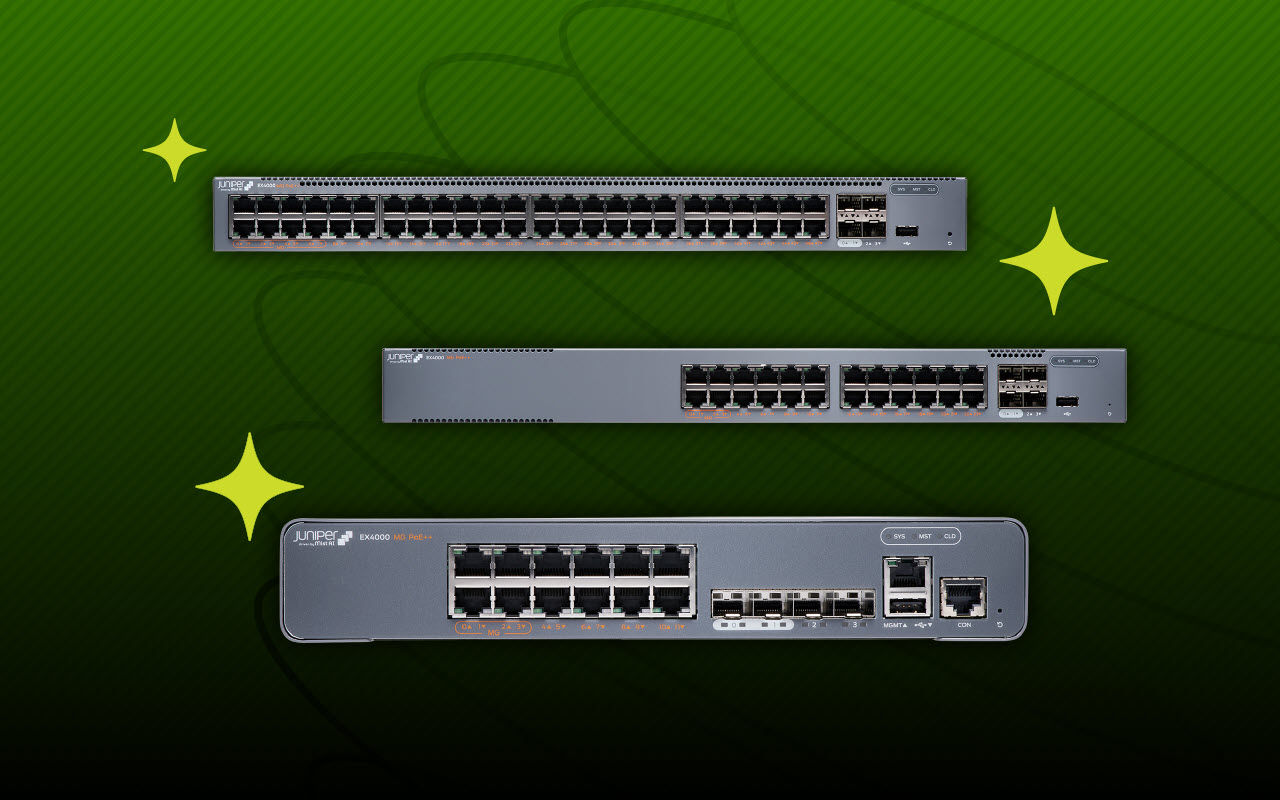AP66 Access Point Datasheet
Download DatasheetProduct overview
The Juniper AP66 Series is high-performance Wi-Fi 7 ruggedized, hardened tri-band 2x2:2 access points with built-in location services and Juniper Mist integration.
AP66 benefits
- Maximizes 6 GHz band, providing increased channel width and enabling multigigabit speeds
- Tri-band with dedicated fourth radio for supporting growing mobility demands
- Flexible integrated Omnidirectional and Dynamic-Directional antenna options
- IP-67 compliant for extreme weather proofing
Juniper Mist benefits
- Fast and reliable deployment and ease of ongoing management
- Centralized control and visibility
- Quick access to new features and functionality with no disruption to services
- Agility to scale as network needs grow
Product Description
The Juniper® AP66 and AP66D are hardened tri-band Wi-Fi 7 (802.11be) high-performance access points designed for weather-demanding indoor and outdoor environments.
The AP66 Series brings Wi-Fi 7 tri-band 2x2:2 MIMO radio performance, cloud-driven automation, and full-spectrum flexibility to challenging indoor/outdoor and semi-industrial deployments without installation complexity. With an IP67-rated enclosure, flexible antenna options to support omnidirectional (AP66) or software controlled directional antennas (AP66D), dual 802.15.4 IoT radios, onboard BLE 6.0, and GNSS/GPS, the AP66 series extends Juniper Mist™ reliability, insight, and AI-native operations to everywhere you need connectivity—from covered walkways and loading docks to campus quads, manufacturing floors, and harsh indoor locations exposed to dust or moisture.
The operational complexity of managing today's enterprise wired and wireless networks continues to increase, driven by the sheer increase in the number of diverse endpoint devices, including mobile clients and IoT sensors. Traditional management approaches, reliant on manual configuration and reactive troubleshooting, lack the necessary scale, agility, and end-to-end visibility to ensure reliable performance in these dynamic environments, which is why having an AI-native network is more important than ever.
Juniper’s AI-native network
Juniper Mist brings true innovation to wireless networking with the world’s first AI-native wireless LAN (WLAN). As Juniper AI-native networking platform, Mist makes Wi-Fi predictable, reliable, and measurable, offering unprecedented visibility into the user experience through unique service-level expectation (SLE) metrics.
Proactive, AI-native automation and a self-healing network replace time-consuming manual tasks, lowering Wi-Fi operational costs and saving substantial time and money. All operations are managed using the open and programmable microservices that are based on the Juniper Mist cloud architecture.
The Juniper Mist cloud architecture
The Juniper Mist cloud‑native, AI‑native microservices architecture delivers unparalleled agility, scale, and resiliency to your network. It lowers OpEx and delivers unprecedented insights into network performance, behaviors, traffic patterns, and potential trouble spots by using data science to analyze large amounts of rich metadata collected by Juniper access points. Juniper AI solutions for Wi‑Fi optimize operator and user experiences with secure client‑to‑cloud automation, insight, and AI‑native actions. With Mist, purpose‑built to leverage AIOps, the AP66 Series harnesses the faster speed and performance of Wi‑Fi 7 and assures an excellent experience for all users and devices and the best end‑to‑end operator experiences.
Juniper access point family
| AP47 | AP37 | AP36 | AP66 | |
| Deployment | Indoor | Indoor | Indoor | Indoor/Outdoor |
| Wi-Fi standard | Wi-Fi 7 802.11be (4x4:4) | Wi-Fi 7 802.11be 5/6 GHz: (4x4:4) 2.4 GHz: (2x2:2) | Wi-Fi 7 802.11be 5/6 GHz: (4x4:4) 2.4 GHz: (2x2:2) | Wi-Fi 7 802.11be (2x2:2) |
| Number of Wi-Fi radios | 4 | 4 | 4 | 4 |
| Wi-Fi radio modes | 2.4/5/6 GHz + 5 GHz + 6 GHz | 2.4 GHz + 5 GHz + 6 GHz | 2.4 GHz + 5 GHz + 6 GHz | 2.4 GHz + 5 GHz + 6 GHz |
| Scanning radio | Dedicated | Dedicated | Dedicated | Dedicated |
| Antenna options | Internal / Directional / External | Internal | Internal / Directional / External | Internal / Directional |
| Virtual BLE | Yes | Yes | No | No |
| Ultra-Wideband (UWB) | Yes | No | No | No |
| USB | Yes | Yes | Yes | No |
| IoT sensors | Pressure, temperature, accelerometer | Pressure, temperature, accelerometer | Pressure, temperature, accelerometer | Accelerometer |
| GNSS/GPS | L1/L5 | L1/L5 | L1/L5 | L1/L5 |
| Secondary Ethernet port | Yes, dual PoE failover | Yes | Yes | No |
| Warranty | Limited lifetime | Limited lifetime | Limited lifetime | One year |
Services available for the Juniper AP66 Wi-Fi cloud services
Juniper® Wi-Fi Assurance
For IT and NOC teams
- Predictable and measurable Wi-Fi
- SLEs support
- WLAN policy fabric for role-based access
- Customizable guest Wi-Fi portal
- Radio Resource Management (RRM), driven by AI
Marvis® AI Assistant
For IT helpdesk teams
- AI-native virtual network assistant
- Natural language processing interface
- Anomaly detection
- Client SLE visibility and enforcement
- Data science-driven root cause analysis
Bluetooth cloud services
Juniper® Asset Visibility
For process and resource improvement teams
- Identification of assets by name and location visibility
- Zonal/Room accuracy for third-party tags
- Historical analytics for asset tags
- Telemetry for asset tags (temperature, motion, and other data)
- APIs for viewing assets and analytics
Analytics cloud services
Juniper® Premium Analytics
For network teams
- Baseline analytics features come included with Wi-Fi Assurance, User Engagement, and Asset Visibility subscriptions
- End-to-end network visibility
- Orchestrated networking and application performance queries
- Simplified network transparency
For business teams
- Baseline analytics features come included with Wi-Fi Assurance, User Engagement, and Asset Visibility subscriptions
- Customer segmentation and reporting based on visitor telemetry
- Customized1 Dwell and third-party reporting for traffic and trend analysis
- Correlation of customer-guest traffic and trend analysis
- Correlated customer-guest traffic and trend analysis
Access point features
High-performance Wi-Fi
The AP66 Series are four‑radio, 802.11be Wi‑Fi 7 APs with three two‑spatial stream data serving radios with maximum data rates of 5.8 Gbps in the 6 GHz band, 2.9 Gbps in the 5 GHz band, and 688 Mbps in the 2.4 GHz band. A dedicated fourth tri‑band scanning radio provides WIDS/WIPS, spectrum analysis, and sensor and location analytics. With 802.11be Multi-Link Operation (MLO), Orthogonal Frequency Division Multiple Access (OFDMA), Multi‑User Multiple Input Multiple Output (MU‑MIMO), and BSS Coloring technologies, the AP66 Series offers performance at unprecedented levels to support new bandwidth‑hungry applications and soaring device densities.
Wi-Fi 7 amendment
The new 802.11be amendment (Wi-Fi 7) expands the capabilities of Wi‑Fi 6E, including the use of up to 1200 MHz of the 6 GHz band for higher throughput and improved application performance. New capabilities include 320 MHz channels that provide double the throughput, MLO for more efficient load balancing and failover, Multi‑Resource Units (Multi‑RU), preamble puncturing, and 4K QAM for higher transmission rates and better user experiences. Only Wi‑Fi 7 and 6E client devices can use the 6 GHz band so there is no interference due to IoT or legacy devices.
AI for AX
Juniper automates and optimizes Wi‑Fi 7 features with AI for AX capabilities to optimize BSS Coloring, improve data transmission scheduling within OFDMA and MU‑MIMO, and assign clients to the best radio to boost the overall performance of the network.
Improved IoT operations
The AP66 Series extends network monitoring and insights to support omnidirectional BLE, Thread*, Zigbee*, or Matter* to increase IoT capabilities with dual 802.15.4 radios for concurrent location services and electronic shelf labels (ESL).
*future considerations
Greater spectral efficiency
OFDMA improves spectral efficiency so that an increasing density of devices can be supported on the network. Density has become an issue with the rapid growth of IoT devices that often utilize smaller data packets than mobile devices and, hence, increase the burden and contention on the network. Additionally, BSS Coloring improves the coexistence of overlapping BSSs and allows spatial reuse within a given channel by reducing packet collisions.
Automatic RF optimization
Reliable RF optimization is even more critical with the addition of 6 GHz spectrum. Radio Resource Management uses a dedicated sensor radio to automate dynamic channel and power assignments, thus avoiding Wi‑Fi and external sources of interference. The Marvis® AI engine continuously monitors coverage and capacity SLE metrics to learn and optimize the RF environment. A learning algorithm uses hysteresis on a 24‑hour window to conduct a sitewide rebalancing for optimal channel and power assignment.
6 GHz device classification
In some regulatory domains, there are special rules to govern the usage of 6 GHz when the AP has either removable external antennas or is weatherized.
AP66/AP66D-US/-WW:
- Standard Power only (U.S. and Canada)
Proactive insight and action
A dedicated, tri‑band fourth radio collects data for Juniper Mist, which uses machine learning to analyze user experiences, correlate problems, and automatically detect their root causes. These metrics are used to monitor SLEs and provide proactive recommendations to ensure problems don’t occur (or are fixed as quickly as possible when they do).
Improved IoT battery efficiency
By incorporating the 802.11ax target wake time (TWT) capability and Bluetooth 6.0, AP66 Series APs help extend the battery life of IoT devices, particularly as additional ones join the network.
Dynamic debugging
Constantly monitor services running on the AP66, sending alerts whenever a service behaves abnormally. Dynamic debugging relieves IT of having to worry about an AP going offline or any services running on it becoming unavailable.
Dynamic packet capture and dynamic spectrum capture
The Juniper Mist platform automatically captures packets and radio frequency spectrum and streams them to the cloud when major issues are detected. AI‑native dynamic packet capture and dynamic spectrum capture enable “network rewind” to identify and resolve wireless interference issues more efficiently. Both features save IT time and effort and eliminate the need for truck rolls with sniffers to reproduce and capture data for troubleshooting.
Marvis AI Assistant
Marvis AI Assistant is a natural language processing (NLP)-based assistant with a conversational interface that helps the understanding of user intent and goals, simplifies troubleshooting, and collects network insights. Marvis AI Assistant uses AI and data science to proactively identify issues, determine the root causes and scope of impact, and gain insights into your network and user experiences. Marvis AI Assistant eliminates the need to manually hunt through endless dashboards and CLI commands.

Effortless, cloud-based setup and updates
The AP66 automatically connects to the Juniper Mist cloud, downloads its configuration, and joins the appropriate network. Firmware updates are retrieved and installed automatically, ensuring that the network is always up to date with new features, bug fixes, and security updates.
Premium Analytics
Juniper® Wireless Assurance, User Engagement, and Asset Visibility services include a base analytics capability for analyzing up to 30 days of data, enabling you to simplify the process of extracting network insights across your enterprise. If you require dynamic insights like motion paths1 and other third‑party1 data and would like the option of customized reports, the Juniper® Premium Analytics service is available as an additional subscription.
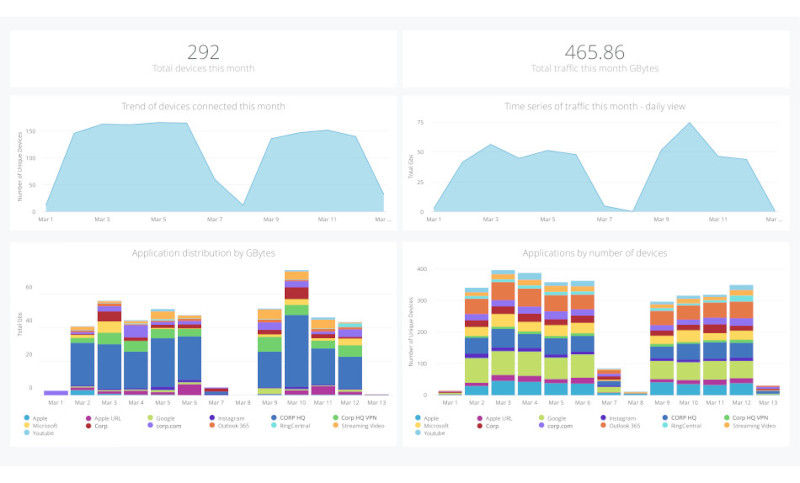
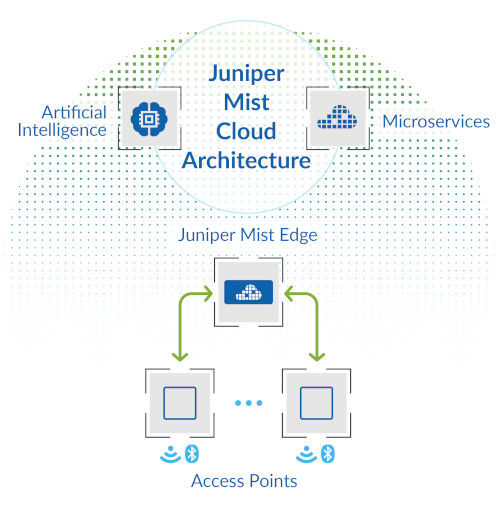
Juniper Mist Edge
Juniper offers a flexible data plane. Juniper Mist Edge is an on‑premises appliance that runs a tunnel termination service. Traffic can be broken out locally or tunneled to Juniper Mist Edge.
Juniper Mist Edge use cases include seamless mobility in large campus environments, tunneling of guest traffic to a DMZ, IoT segmentation, and teleworker services.
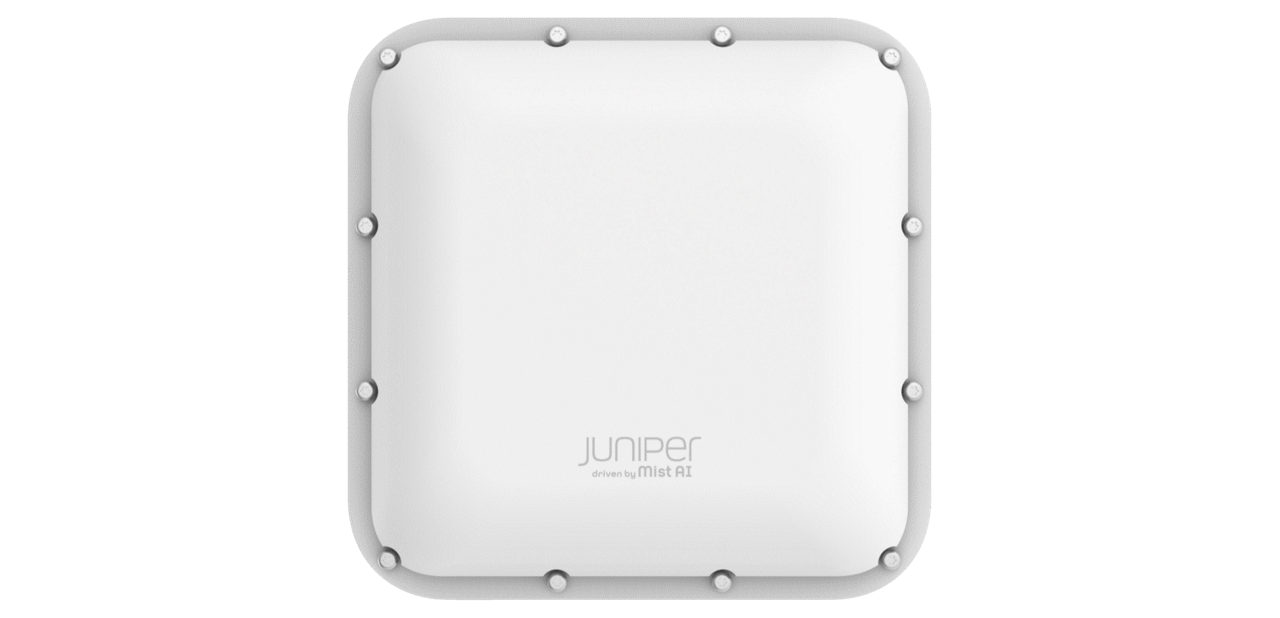
Top view of AP66
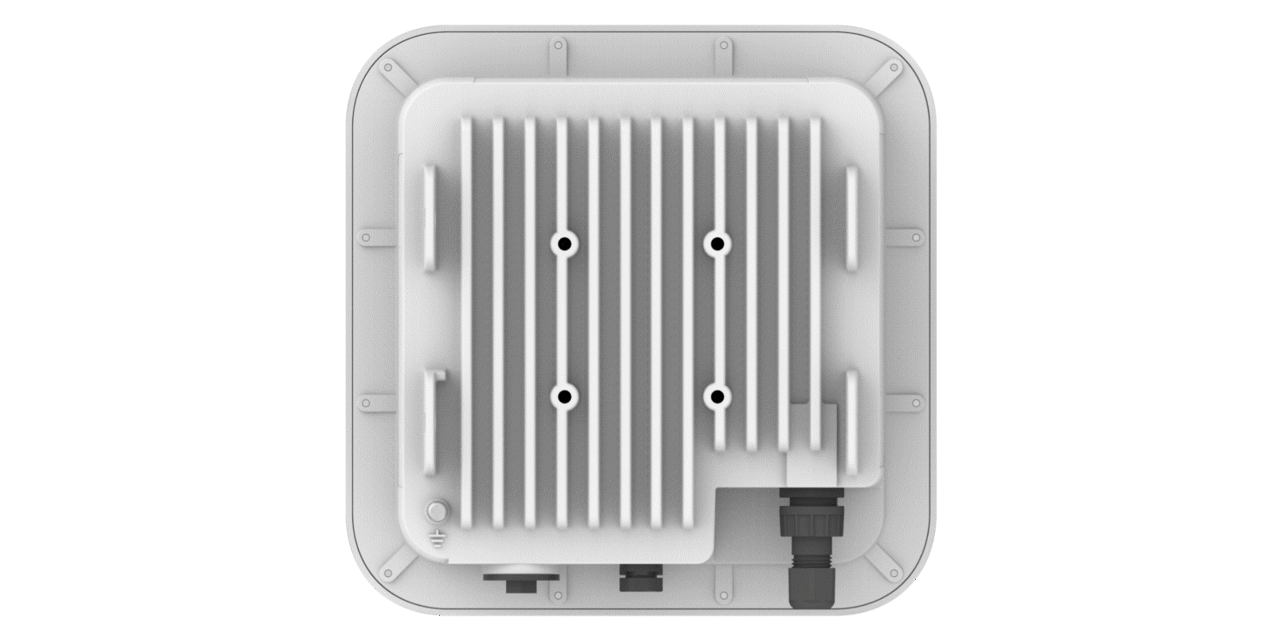
Bottom view of AP66
Specifications
| Wi-Fi standard | Wi-Fi 7 802.11be backwards compatibility with 802.11a/b/g/n/ac/ax |
| Wi-Fi radios | 2.4 GHz 802.11b/g/n/ac/ax/be radio 5 GHz 802.11a/n/ac/ax/be radio 6 GHz 802.11ax/be |
| Combined highest supported data rates | Tri-Band: 9.38 Gbps – 2.4 GHz + 5 GHz + 6 GHz |
| 2.4 GHz | 2x2:2 802.11be up to 688 Mbps data rate |
| 5 GHz | 2x2:2 802.11be up to 2.9 Gbps data rate |
| 6 GHz | 2x2:2 802.11be up to 5.8 Gbps data rate |
| MIMO operation | 2 Spatial stream SU-MIMO for up to 5.8 Gbps wireless data rate to individual 2x2 ETH 320, 2 Spatial stream MU-MIMO for up to 5.8 Gbps wireless data rate to 2 MU-MIMO capable client devices simultaneously |
| Dedicated forth radio | 2.4 GHz, 5 GHz, and 6 GHz tri-band WIDS/WIPS, spectrum analysis, and sensor and location analytics radio |
| Internal omni antennas – AP66 | 2 x 2.4 GHz omnidirectional antennas 2 x 5 GHz omnidirectional antennas 2 x 6 GHz omnidirectional antennas |
| Internal dynamic directional antennas – AP66D | Software selectable approximately 90x90 degree, 90x30 degree or 30x30 degree, 2 x 2.4 GHz directional antennas 2 x 5 GHz directional antennas 2 x 6 GHz directional antennas |
| IoT radios | Dual core 802.15.4 radios and dual omnidirectional antennas, Bluetooth 6.0 |
| Beam forming | Transmit beamforming and maximal ratio combining |
| Power options | PoE PD support via Eth0: 1. 802.3at - Full function 2. 802.3af - All radios disabled. Cloud connectivity only |
| Product dimensions | AP66: 232 x 232 x 71mm / 9.1” x 9.1” x 2.8” AP66D: 232 x 232 x 88mm / 9.1” x 9.1” x 3.5” |
| Shipping box | 278 x 268 x 129mm / 10.9” x 10.6” x 5.1” |
| Product weight | AP66: 2.0kg / 4.4lbs AP66D: 2.1kg / 4.6lbs |
| Operating temperature | AP66, AP66D: -40°C ~ +55°C (-40°F - 131°F) with solar loading |
| Operating humidity | 10% to 90% maximum relative humidity, non-condensing |
| Operating altitude | 3,048 m (10,000 ft) |
| Trusted Platform Module (TPM) | Included a TPM for infrastructure security |
| Supported frequency bands (country-specific restrictions apply) | 2.400 to 2.4835 GHz ISM, 5.150 to 5.250 GHz U-NII-1, 5.250 to 5.350 GHz U-NII-2A, 5.470 to 5.725 GHz U-NII-2C, 5.725 to 5.850 GHz U-NII-3/ISM, 5.925 to 6.425 GHz U-NII-5, 6.425 to 6.525 GHz U-NII-6, 6.525 to 6.875 GHz U-NII-7, 6.875 to 7.125 GHz U-NII-8 |
I/O and Indicators
| IoT sensors | Temperature, accelerometer |
| GNSS/GPS | GNSS L1 supporting GPS, Galileo, GLONASS, BeiDou, and QZSS GNSS L5 supporting GPS, Galileo, BeiDou, and NavIC |
| Eth0 | 100/1000/2500/5000/10000Base-T (802.3bz); RJ45, PoE PD |
| Reset | Reset to the factory default settings |
| Indicators | One multicolor status LED |
| Traffic Forwarding Options | Eth0, Juniper Mist Edge |
Mounting brackets
| APOUTBR-FM2 | Flush mount bracket (included in box) |
| APOUTBR-ART2 | APOUTBR-ART2 |
Ordering information
| United States only | AP66-US (hardened internal antenna) AP66D-US (hardened dynamic directional antenna) |
| Outside of United States | AP66-WW (hardened internal antenna) AP66D-WW (hardened dynamic directional antenna) |
About Juniper Networks
Juniper Networks is leading the convergence of AI and networking. Mist™, Juniper’s AI-native networking platform, is purpose-built to run AI workloads and simplify IT operations, assuring exceptional and secure user and application experiences—from the edge to the data center to the cloud. Additional information can be found at www.juniper.net, X, LinkedIn, and Facebook.
1000810 - 001 - EN SEPTEMBER 2025




